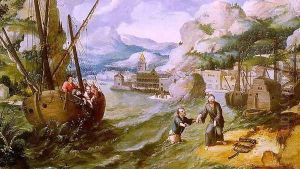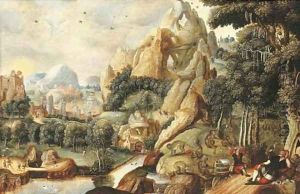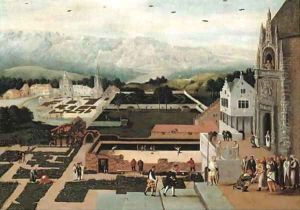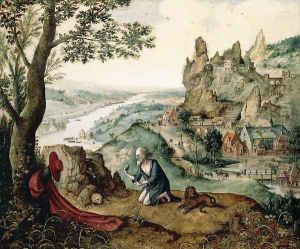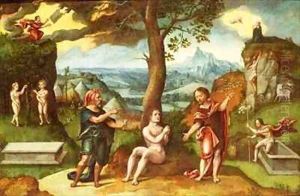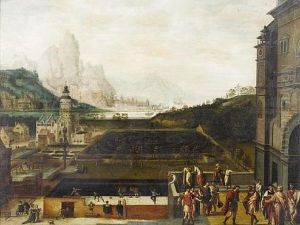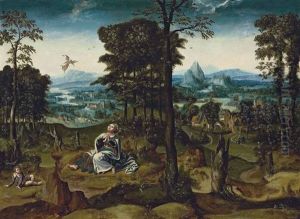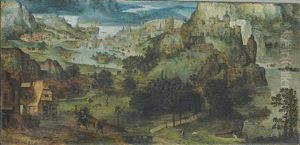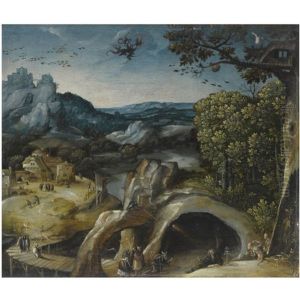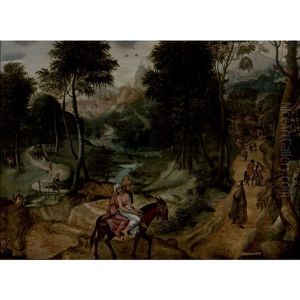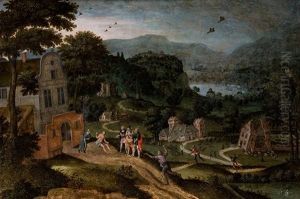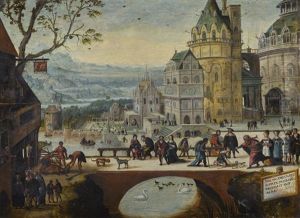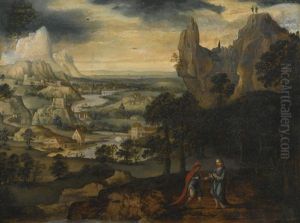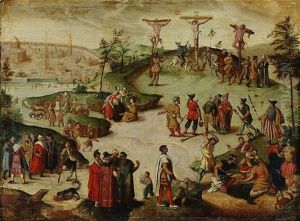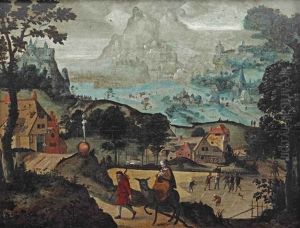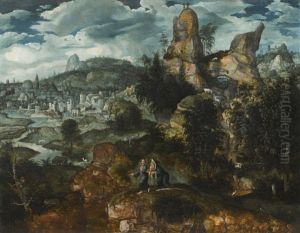Lucas Gassel Paintings
Lucas Gassel was a Flemish Renaissance painter, primarily known for his landscape and religious compositions. Born around 1500 in Helmond, then part of the Duchy of Brabant (now in the Netherlands), Gassel's exact birth date remains unknown. His early life and training are not well-documented, but it is believed that he may have been a pupil or follower of the prominent landscape painter Joachim Patinir.
Gassel's surviving works are relatively few, but they illustrate a keen interest in detailed landscapes filled with biblical and mythological scenes. His paintings are characterized by their intricate detail and the use of aerial perspective, a technique that creates depth by gradually changing color and clarity. This was a relatively new approach to landscape painting at the time and suggests that Gassel was influenced by the innovations of his contemporaries.
Although Gassel spent most of his career in his hometown, he eventually moved to Brussels, where he became a master in the city's painters' guild in 1544. This period marks the height of his artistic activity, and he received commissions from local patrons and religious institutions.
Lucas Gassel's works were often small in scale, suitable for private devotion or the homes of well-to-do citizens. His panels often featured complex, imaginary landscapes that served as backdrops for biblical stories or moral allegories. While not as widely known as some of his contemporaries, such as Pieter Bruegel the Elder, Gassel's contribution to the development of landscape painting during the Renaissance has been recognized by art historians.
Gassel's date of death is uncertain, but it is believed he died in 1568 or 1569. His legacy lives on through his unique approach to landscape painting, which blended imaginative scenes with careful observation of the natural world. His work provides an important link in the history of Northern Renaissance art, bridging the gap between the early landscape compositions of Patinir and the more narrative-rich scenes of later artists like Bruegel.

